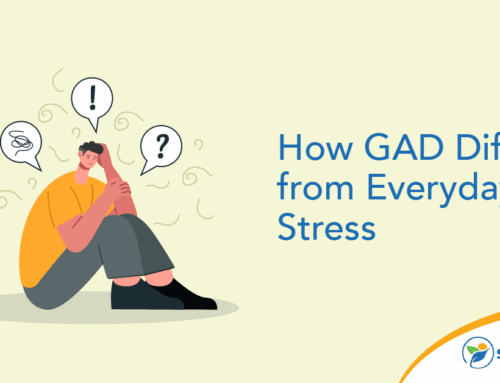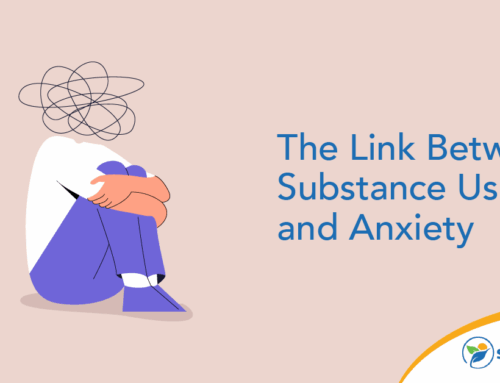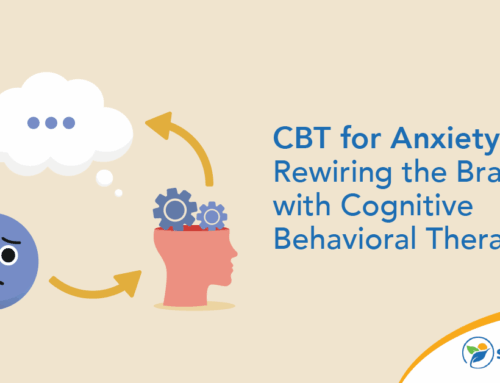Xanax was first introduced to the U.S. market in 1981 and is still listed as one of the top medications to help relieve anxiety and even insomnia. Xanax was prescribed nearly 17 million times in 2020. While it’s not as widely prescribed as it was in 2014, when nearly 29 million prescriptions were written, it’s still commonly used as a short-term tranquilizer in spite of its highly addictive nature. So, what does Xanax do to the brain? Keep reading to learn more about this powerful drug and how it’s possible to cause more harm than good when taken long-term.
What Is Xanax?
Xanax is the brand name of the medication alprazolam listed in the benzodiazepine class of medications, or benzos. Xanax is commonly used to treat depression, anxiety and a variety of panic disorders. It’s available in several different forms, including tablet, XR tablet, liquid and a disintegrating tablet, but it’s most commonly prescribed in tablet form. While it can be helpful when taken as prescribed for short-term use, Xanax is not recommended for long-term use due to the effects it has on the brain and central nervous system and its highly addictive nature.
Like many benzos, Xanax is a controlled substance due to its extremely addictive nature. As a controlled substance and one that has medical uses, Xanax is regulated in the way it’s made, stored, handled, used and distributed.
How Is Xanax Prescribed?
Doctors frequently prescribe Xanax to provide short-term relief of an anxiety or panic disorder, which can cause tension, nervousness, restlessness and intense fear. It may also be prescribed to treat depression, agoraphobia and premenstrual syndrome. Some doctors may also prescribe the medication during times of an isolated event, such as after the death of a loved one when a person feels overwhelming sadness or before an individual must make a long flight and has a fear of flying. During an isolated event or a one-time event, the medication can be used effectively as a mild tranquilizer.
When Xanax is prescribed for a longer length of time, the initial dose is small and may range from 0.25 mg to 0.5 mg three times a day. Your physician may adjust this dose by no more than 1 mg every 3-4 days until you reach a therapeutic dose, which is typically no more than 4 mg per day for anxiety and up to 10 mg per day for panic disorder.
What Does Xanax Do to the Brain?
So how does Xanax work? Like other benzos, Xanax acts quickly, usually within 30 minutes to an hour, by enhancing the action of the neurotransmitter gamma-aminobutyric acid (GABA), which is a naturally occurring chemical messenger in the brain that inhibits neural activity. On Xanax, GABA receptors cause a sedative effect, which can calm you down, make you feel relaxed and even help you sleep. This makes the drug very effective for getting feelings of panic under control quickly.
While you may only feel the physical effects of Xanax for 3-4 hours, it can stay in your bloodstream for up to 8 hours and sometimes as long as 12 hours. Unfortunately, even with short-term use, once the medication wears off, withdrawal symptoms can develop, which are often the very symptoms the drug is used to control. You may start feeling you need to take more of the medication to relieve the symptoms, which can lead to addiction along with cognitive problems and other symptoms.
Some of the long-term negative side effects of Xanax include:
- Drowsiness
- Slurred speech
- Clumsiness
- Loss of appetite
- Dizziness
- Tremor
- Difficulty concentrating
- Blurred vision
- Body aches
- Los of interest in activities
- Inability to perform routine tasks
- Thoughts of suicide
Does Xanax Have Long-Term Effects on the Brain?
Long-term use of Xanax most often leads to addiction, and many people start exhibiting signs before they are even aware of it, including drug cravings, tolerance, continuing to use after it begins causing problems with work or at home, the inability to stop using and constant thoughts of using.
Over time, the Xanax effect on the brain results in changes to your neural pathways, which can lead to brain damage. The effects of this include violent and aggressive behaviors, hallucinations, mania and even seizures. Xanax use may also lead to memory problems and cognitive impairments. You may have a shorter attention span, have moments of confusion and even suffer from memory lapses.
What Happens When You Quit Xanax?
Because the brain and central nervous system get acclimated to the effects Xanax has on the body, it’s important to wean slowly off the medication to prevent shocking your system. Once you stop taking the drug, your brain tries to overcompensate for the lack of GABA. As a result, you can experience psychosis, paranoia, mood swings, mania, convulsions, seizures and even death. When your physician weans you off the medication or if you decide to stop taking the drug, it’s important to do it slowly and over a period of time to reduce withdrawal and the negative effects.
How Long Does It Take to Recover After Quitting Xanax?
How long does Xanax affect the brain? The exact length of time it takes to recover after quitting Xanax varies depending on how long you’ve been taking the medication, your dosage, how frequently you take it and whether you take other substances. Medical detox is usually recommended for safety reasons, and tapering is done slowly. Other benzos are often used to help control the symptoms of withdrawal, and other medications like anti-seizure medications may be necessary to withdraw safely. Symptoms of withdrawal typically peak after a week and a half of taking the last dose and can linger up to 30 days or more.
Take the First Step to Recovery
If you’ve been prescribed Xanax in the past or feel you are struggling with a Xanax addiction and are ready to seek help, our professional and caring counselors are available 24/7 to listen. Contact us at Sunlight Recovery now to talk about your treatment options and get started on recovery today.







